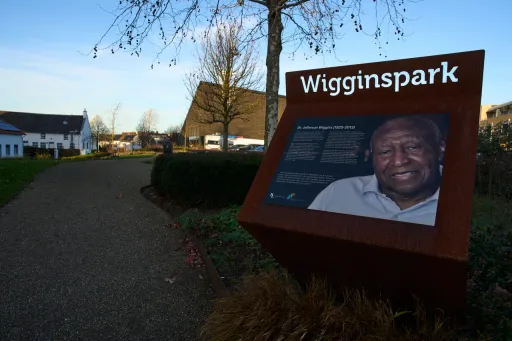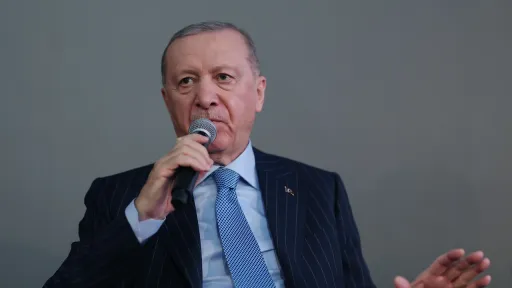By Sylvia Chebet
Walking with lions, petting and playing with cubs, bottle feeding the harmless little things, is the thrill that lion farms offer, but for a fee.
With all these moments aptly frozen in photos and shared widely on social media, many thrill seekers feel the money they pay is incomparable to the experience. What they may not know is that the lions are bred to suffer for profit, according to conservationists.
“Viewing animals in predator parks and zoos, engaging in cub petting or feeding, walking with lions, and other selfie activities, all contribute to the cruel life cycle of captive-bred predators that creates a never-ending demand for cubs bred for only one reason - financial gain,” Dr. Louise de Waal, director of Blood Lions, a conservation campaign in South Africa, tells TRT Afrika.
In 2018, the South African cabinet decided to close down the lion-breeding industry, but the order is yet to be executed.
In a bid to speed up the closure of lion farms, four South African NGOs have launched an awareness campaign, shining the spotlight on the plight of captive lions in South Africa ahead of World Lion Day marked every year on August 10.
“You’re killing them softly”
Blood Lions, FOUR PAWS, HSI/Africa and Voice4Lions have launched a campaign dubbed “You’re killing them softly,” to bring awareness to the fact that anyone paying to play, bottle feed, and/or hand-raise captive-bred predator cubs, use them as photo props, or merely visit predator parks, is fuelling the cruel commercial captive predator breeding - and killing - industry.
“However well-intentioned people’s actions are, these cubs are not orphans, they have no conservation value, they are purely bred to feed an unethical and insidious industry that commodifies these predators,” the group states.
Most breeding facilities market themselves as sanctuaries or rescue homes for vulnerable, neglected big cats and their cubs, attracting unsuspecting volunteers who even pay for an experience to tend to the animals.
“Many are lured under the pretext that they are contributing to conservation,” De Waal says.
The illegal captive-breeding industry coined and popularized the term voluntourism to further propagate the myth that it is working to ‘protect’ endangered species, conservationists say.
According to Ross Harvey’s research published in 2020, a volunteer pays anything between $250 and $1,750 per week with most facilities requiring a minimum of two weeks per volunteer, which generally includes accommodation and food.
Conservationists have observed that most of the volunteers tend to be white females between 18-35 years old from Europe and North America.
Is a photo worth a lifetime in captivity?
Besides the volunteers, there is an even bigger population that keeps the predator parks going - the visitors who pay to view, pet and walk with the lions.
According to Harvey’s research, the cost for cub petting or feeding or walking with lions ranges between $5 - $170 per person per activity, with many of the farms estimated to be receiving an average of 100 visitors per day.
The study found that predator interactions with tourists contribute an estimated total gross revenue of roughly $180 million per annum.
However, the paper indicates that potential reputation damage being wrought on South Africa’s tourism sector through the industry is $2.79 billion.
“By paying to touch, play, cuddle, walk, or feed a lion or other predator at one of these predator parks, you’re killing them softly,” the four animal welfare and conservation groups state in their campaign messaging.
“Don’t contribute to the problem. Be part of the solution.”
The conservationists emphasise that such activities perpetuate the industry and fans the demand for a continuous supply of cubs. They urge members of the public to encourage friends, family and schools to NOT visit any commercial captive lion facilities.
‘Bred like rats’
The illegal lion breeding industry in South Africa has been thriving for decades since it started in the 1990s. With about 350 lion farms, there are now 8,000 lions in captivity, three times more than those in the wild within the country, and nearly half the number of lions in the wild worldwide.
According to data from the International Union for Conservation of Nature (IUCN), there are only around 20,000 lions roaming in the wild globally.
The wild rise of lion population in the breeding sites is a result of unethical breeding practices fueled by the ever-present demand for cubs and an even more brutal thrill for hunting the grown lions for their prized heads and beautiful manes, conservationists say.
"Most lion farms are pretty intensive production lines," says de Waal. "A lioness in the wild tends to have only one litter every two years on average. They would have about four or five litters in captivity every two years.”
Besides cub petting, walking with lions and voluntourism, the lion farms profit from “canned” hunting – hunting in small enclosures to guarantee a kill - the live trade, and trade in their bones, parts and derivatives.
“The dignity of our iconic species has been replaced by the commodification of captive lions and other predators at every stage of their lives,” the coalition of NGOs say, adding: “This is contributing to the decline of the species in the wild and a worldwide biodiversity crisis.”
While the South African government has expressed commitment to ultimately shut down the commercial captive lion industry, the animal welfare and conservation groups demand a detailed implementation plan with time-bound goals.
The 2024 World Lion Day campaign raises vital awareness amongst the public that everyone is capable of pushing for meaningful change and ending the exploitation of nature’s apex predator, the king of the jungle.
➤ Click here to follow our WhatsApp channel for more stories.
























